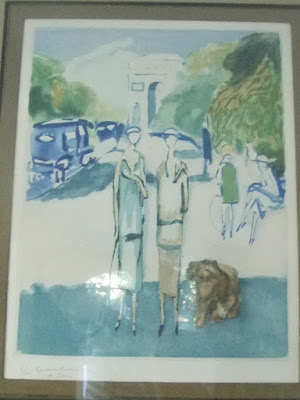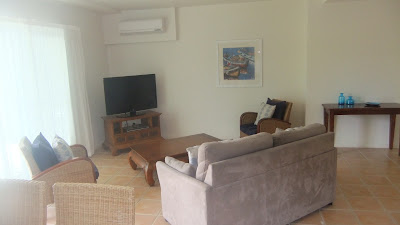.
Many years ago I investigated the modest career of an early 'New Zealand tenor'. I wrote him up, and put him aside ... alas, there doesn't seem to be a New Zealand music magazine in which to publish this sort of thing any more..
Many years ago I investigated the modest career of an early 'New Zealand tenor'. I wrote him up, and put him aside ... alas, there doesn't seem to be a New Zealand music magazine in which to publish this sort of thing any more..
Today, what was my surprise to come upon a photograph of the gentleman. So, since his was a singular story, I thought I'd give it to the world anyway. With the famous picture. So here goes ...
WINTER, Melchor [WINTER, Thomas William] (b Hereford 13
December 1826; d Christchurch, New Zealand 28 August 1920)
The tenor who
called himself 'Melchor Winter' was but briefly before the British public as a
professional vocalist, but his is a colourful tale.
‘Melchor’, as
he chose to call himself once he determined to take on a musical career, was
born to anything but music. For his father, rightly named Thomas Winter, was
the landlord of the Castle Tavern at 25 High Holborn, and, under the pseudonym
of ‘Tom Spring’, he was also one of Britain’s most celebrated fist fighters.
Born at Fownhope in Hertfordshire in 22 February 1795, into a family of
butchers, Tom Spring had – unlike his brothers William and Richard -- eschewed
the cleaver for the pump and for fisticuffs.
On the way to
fame, he had married Elizabeth Griffin or Griffiths (St Peter’s, Hereford, 26
June 1821), and Thomas William – to be known as Melchor – was, in theory, the
first fruits of that marriage.
Tom Spring
was dead (Castle Tavern, Holborn, 20 August 1851) and Melchor was himself
married, to Ann(ie) Elizabeth Ratton (b Colchester, c1827) (Ross, 5 May 1853),
daughter of Joseph Lewis Ratton ‘of Tavistock Place, St Pancras’ and Pheby née
Blake, and the father of a daughter Ada Charlotte (b Holborn 14 January 1854),
before he devoted himself to music, and attempted to make a career as an
operatic tenor.
In this
attempt, he had two major handicaps, summed up, years later, by one of his
colleagues: ‘[Winter] had studied for the operatic stage and possessed a voice
which, though of excellent musical quality, was as diminutive in power as the
tenor was in physical proportions…’. Little man, little voice.
For the
record, I quote the Musical World of
1842, concerning the local organist’s concert on 3 October at Tonbridge: ‘Mr
Winter, a promising young tenor new to the public, sang ‘In Native Worth’ and
Beethoven’s ‘Adelaide’ very pleasingly’. Could it be he? A 15 year-old tenor?
If not,
Melchor was seemingly already in his thirties when he first ventured on to the
public platform, towards the end of 1859. I spot him at a concert in Bath on
the first day of December singing ‘M’appari’, and a few weeks later he is up in
London, delivering the same aria (to an encore) in George Genge’s concert at the
Freemasons Hall. Alongside such established tenors as Donald King, George
Perren and the popular Genge himself.
Concert
engagements soon followed (Augusta Manning, Edwin Ransford, Peckham Concerts,
the van Noordens, ‘Il mio tesoro’) and on 28 May 1860 Melchor joined with the
flautist Benjamin Wells to present a concert of their own at the Hanover Square
Rooms. Willoughby and Georgina Weiss, Charlotte Sainton-Dolby, Mahlah Homer and
Marie Chipperfield made up the programme:
‘Mr Melchor
Winter who has recently entered the profession as a tenor singer has a voice
sweet and of some extent ... [he] sang with great feeling and intelligence
Wallace’s ballad ‘Home of my heart’, ‘Under the linden tree’, ‘The Death of
Nelson’ and, with Mrs Sainton, the duet of ‘Di conforto’, and ‘Sulla tomba’
with Miss Chipperfield, in all of which he received very great applause’. The
two Weisses and the former Miss Dolby joined him in the Rigoletto quartet to finish.
Winter’s
operatic ambitions soon came to fruition. After a whirl round some small
provincial dates with Marian Pyne Galton (‘primo tenore of Miss Marian Pyne’s
Opera Company’) he was hired to appear in the operatic season at the Eastern
Opera House. The prima donna for the season was Florence Lancia, the star tenor
was Augustus Braham, the second William Parkinson, and then there was Melchor
who, it was announced, would sing Pollio in Norma.
In the event, Braham sang Pollio, but Winter was undeniably given his
chance. He appeared as Alfredo to the La
Traviata of Madame Lancia and as Thaddeus to The Bohemian Girl of Fanny Ternan, and for his Benefit night joined
Lancia in a performance of Il Trovatore. And
the results were encouraging. Although the press allowed that he was ‘evidently
somewhat new to stage business’ they judged him to be in possession of ‘a voice
which though not of any great power is of agreeable quality, particularly as
regards the higher notes, and he sings the music correctly and with
intelligence’. The higher notes being just what an audience, and especially an
East End audience, ‘most doat upon’ in a tenor – especially when, like
Melchor’s, they are delivered from the chest and not, as was the fashion with
even some, nay many, of the day’s most famous singers -- in falsetto, the
little primo tenore went down all right. Alas for the talk and the confidence
thus engendered.
Shortly after
this, the great soprano Hermine Rudersdorff found herself in an embarrassed
state. She was to give the annual Christmas operatic season at Cork – perhaps
the most consequent Irish operatic season of the year -- and she was short a
tenor. So she engaged – surely, sight unseen – Melchor Winter of the Eastern
Opera House. Madame Rudersdorff was a large woman. Stout rather than fat, but
very tall and very angular. Mr Winter was short. Noticeably short. Madame Rudersdorff
had a vast dramatic soprano voice. Mr Winter had a fine top B in chest, plenty
of delicate skills and touches, but decidedly limited lungpower. They were
scarcely a good match.
The Irish
operagoers, who’d just seen Mme Rudersdorff play opposite Elliot Galer and Tito
Palmieri, couldn’t take the new combination. It wasn’t just the height thing,
it was the voices. One night, so it was reported, when Melchor started to sing,
a smart fellow upstairs called out ‘Ah
then Micky what is it? Is that fellow singing or is it the gas?’ and the house
collapsed. After the incident, recognising the poor tenor’s real abilities, the
audiences treated him better, but, before the end of the season, Galer had been
recalled, and Melchor Winter bowed out from off the operatic stage for good.
Which didn’t
stop him advertising himself, when he went back to England, as ‘the principal
English tenor of Mme Rudersdorff’s opera company’.
On 30 April
he put on a concert of his own at the Myddelton Hall. Rose Hersee, Emma
Heywood, Julia Elton and her sister and Theodore Distin appeared and Mrs
Melchor Winter, ‘pupil of Dr Sterndale Bennett’, made her first London
appearance as a professional pianist.
In June, he
put together what he called a ‘Boudoir Opera Company’ giving concert
performances of opera in the suburbs. He sang his Manrico to the Leonora of
Fanny Thirlwall, the Azucena of Emma Heywood and the Luna of Borrani, and sang
it under conditions more favourable to himself. Then he took the company on a
wee tour to Ludlow and Wrexham.
But
engagements were still limited. He sang with Mrs Paul, Augusta Thomson and
Grattan Kelly at the Glasgow Saturday Evenings and in 1862 I spot him at
Godalming and at Peckham again with Rose Hersee, and, with his wife at the
piano, at the Whittington Club with Herman Slater and at the Great Western
Society in Camden Square, but that was it.
Melchor
Winter obviously realised that he wasn’t going to make it. Not to where he
wanted to be. In the later part of 1862, he packed up his worldly goods,
including the valued memorabilia of his father’s career, boarded a ship for
Australia, and, while Madame Winter continued to deliver her well-liked piano
concerts to the London public (with guest vocalists of the calibre of Parepa,
Campanella or Emma Heywood), her husband scouted out the more inviting parts of
the southern hemisphere.
He finally
chose New Zealand, and in 1864 the Winters emigrated to Christchurch.
In 1864, the
burghers of Christchurch had heard few singers of Melchor’s calibre. And, as
residents, the Winters – both of them – were musicians of a kind of which the
country was much in need. They would
live on there, performing when they would – Melchor visited Australia in 1872,
‘the Auckland tenor, formerly of London’, and sang in concert in Melbourne
(‘Thou art so near and yet so far’), he sang in 1876 at the opening of
Christchurch’s Theatre Royal – teaching as they would, to a very ripe old age.
Madame Winter
died in Christchurch on 27 January 1919, and Melchor in 1920, at an age that
was reported to have been in excess of a hundred years. The local press gave
his birth as 28 October 1818, which by no means tallies with the 1851 census
and also makes him illegitimate! He was, in fact, a not negligible ninety-five.
I hope he
forgave the gaseous Irishman. He should have, for otherwise he might have spent
painful years in small touring opera companies around the British provinces,
instead of becoming as appreciated and happy in New Zealand as David Miranda
did in Sydney.




































